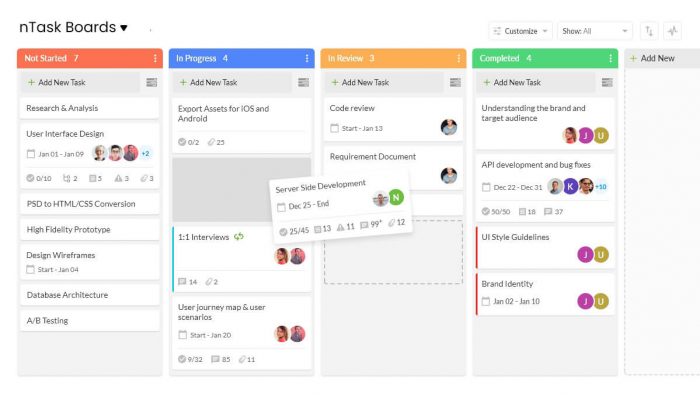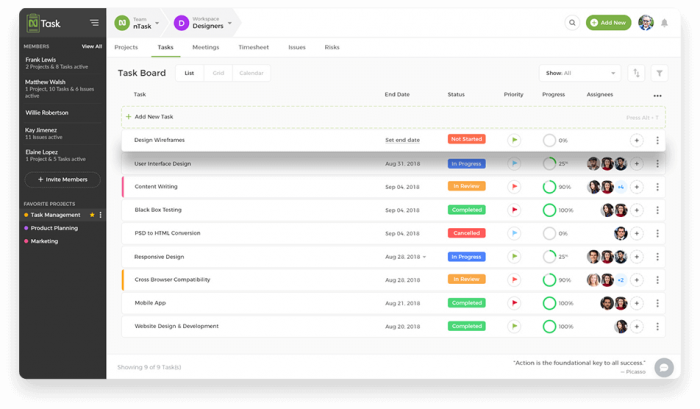Creating a marketing plan demands hard work, acute attention, and undivided time.
Understanding the fundamentals of the Marketing planning process makes it easier for professionals to come up with a robust marketing plan.
Marketing is not only about putting ads or sending mass marketing emails. The success of marketing depends on the development of an efficient marketing plan, created via a strategic marketing planning process.
The plan is a reflection of the goals, culture, and ability of your marketing team. Formulation of a marketing management planning process is imperative to devise an effective plan.
A good and effective marketing planning process will give birth to a successful and profitable marketing plan.
Not only will the marketing planning process impact the overall outcome of the marketing plan but will also reflect the efficiency of your resources.
This article is a step-by-step guide to help you design the perfect marketing planning process. The forthcoming paragraphs include a breakdown of all the steps in the marketing planning process, guaranteed to help you make the perfect plan.
Here’s how the basics of any marketing plan usually go…
What Does The Term ‘Marketing Plan’ Entail?
A marketing plan is a document that details the marketing strategy of your organization. This action plan is used to advertise and promote a company’s goods and services to its customers.
A marketing plan usually constitutes the following:
- The target audience and their needs
- Marketing campaigns to be initiated
- A detailed summary of a company’s aims and goals
- Metrics to assess the success of the marketing campaigns
A strategically planned marketing plan helps individuals stay focused and work towards the achievement of organizational goals.
Here’s how you can create a flawless marketing plan to out-do your competitors.
The Steps Involved In Marketing Planning Process
Your first encounter with a marketing plan might overwhelm with. The marketing management planning process, however, is simple and easy.
The planning process will be a walk in the park if you pay attention and follow the following steps in the marketing planning process:
- Determine the marketing goals of your organization
- Audit the previous marketing plans
- Conduct market research
- Thoroughly analyze the market research
- Identify your target consumers/clients
- Set a budget
- Identify marketing strategies
- Develop a schedule for the implementation
- Devise an evaluation process
1. Determine The Marketing Goals Of Your Organization

The first step in any process is the determination of one’s aims and goals. The same is true in the marketing management planning process.
Before the creation of a plan, it is very important to be aware of the goals of your corporation. The PMs as well as the members of the team should keep the organizational goals in mind before devising the plan.
Bear in mind, the goals should be realistic and achievable. Setting unrealistic goals will not only burden the team but will also put a mental strain on them hence, lowering their productivity.
You can set time limits for the achievement of a goal. The time span will help you to plan tasks according to the goals.
You can make it even easier by dividing your goals into three definite categories with specific time limits:
- Immediate (1-6 months)
- Short term (6-12 months)
- Long term (12-24 months)
The division makes the accomplishment of the goals easier by making you stay focused and guiding your efforts in the right direction.
Also, make sure to share these goals with your team members and allow them to suggest changes. Their invaluable recommendations will make the attainment of the goals much easier.
You can take the help of project management tools to help you stay on track and achieve your goals. nTask, for example, helps you keep an eye on the progress of your goals.
With the help of nTask’s, you can fragment your goal into smaller, deliverable chunks. Furthermore, you can track the status, start date, end date, and priority status of a specific task.
The completion of each task in the task list takes you one step closer to the accomplishment of your goal.
It also offers a variety of other features to make sure your goals are achieved in time. Creative visualization via Kanban Boards or Gantt charts is an added feature, the use of which makes it easier for you to see the overall growth of your work.
You think it, nTask can do it!
2. Audit The Previous Marketing Plans
Before you move on with the plan, take a look at the marketing plans of the past 2-3 years. Review the plan, the success of the goals, advertisement, etc.
The marketing audit will show which marketing initiatives worked in the past and which ones didn’t. Once you have understood the rights and wrongs of the past, you will be able to design a better plan.
3. Conduct Market Research

After you have understood the dos and don’ts of the marketing plan, you must determine your standing in the market. Conduct market research to:
- Envisage the results of the realistic implementation of your plan
- The culture of the community you work in
- Your position in that community
This research will allow you to predict the future of your organization in the market, growth opportunities in the community, the competitive factors, and the opportunities available to you.
Market research is an integral part of the strategic marketing planning process. Market research may, also, highlight the risks and issues in your plan and the possible solutions for betterment.
Some might think of it as a time-consuming process, but the outcomes are worthwhile. It gives you an idea about the steps you should undertake for the achievement of your goals. It also helps you create a foolproof plan guaranteed to make your dreams a reality.
4. Thoroughly Analyze The Market Research

Once you have the findings of the research in your hand, you should analyze the data collected and chart the findings. This will help you identify the most effective marketing strategies.
The analysis will also give you a better opportunity to understand the community and your buyers. You might even have to modify your goals based on this research. Rest assured, it will be worth it since it will perfect your plan, minimize all the risks and dangers, and get rid of all the loopholes before you move ahead.
You will be able to save on your manpower as well as your finances. It’s a win-win situation, isn’t it?
5. Identify Your Target Consumers/Clients

How well do you know your customers? Are you aware of their needs? Have you considered their needs in the plan? Defining your target audience is bound to help you make the perfect plan.
The identification of your target audience helps narrow down a specific group of people towards whom you target your marketing plan.
Your target audience may include people of a specific age group, gender, profession, location, language, ethnicity, nationality, etc.
Be careful, your target audience should not only include the consumers but also the people who can influence them.
You will need to focus on their needs to be able to tailor your marketing plan per their needs. For example, the target audience for a candy company will be children in the age range of 2-12. The marketing plan will, then, target those children and create marketing campaigns that attract those children or their parents (who will buy them the candies).
To be able to create the best of the best and the most efficient plan, you will have to read the minds of the target clients. Once you have cracked open that code, you will be able to make the best of the information and create the perfect marketing plan.
The more detailed and focused your findings are, the better will be your strategies.
6. Set A Budget
Once everything is set in place, you move on to the finances of the plan. Determining the budget before moving forward is important since your marketing strategies are bound by the budget.
You might want to stay within the budget to make sure the marketing strategies you come up with are within the limits. If you exceed the budget constraints, you may not be able to execute those marketing strategies.
Ideally, companies spend about 3-15 percent of their annual budget on marketing. Established companies usually allocate about 3-5% of their budget on advertising, while new companies with more competition have to spend about 10-15 percent for better results.
Some of the initial marketing tactics cost more than the later ones. For example, designing a logo, branding, etc. costs thousands of dollars while networking may cost nothing at all.
No matter how big or small your budget is, the implementation of these strategies will help you in the long run so invest in your business for better prospects.
7. Create Marketing Strategies
Now that you have identified your audience and set a specific budget, you can work on the marketing strategies. Keep in mind that your strategies should target your goals.
There is a variety of platforms via which you can approach your target consumers. These include:
- Newspapers Print media advertisements
- Television Ads and sponsors
- Social media Facebook, Instagram, Twitter, etc.
- Google Search Engine optimization
- Content marketing Blogs and articles
Make sure that whichever strategy you employ, reflects the needs of your target audience. This way, your audience will be able to relate to your ads and will probably buy your goods and services.
Also, do not spam your audience, that might be more disadvantageous than no adverts at all.
8. Develop a schedule for the implementation

Now that you are armed with everything you need, it’s time to implement the strategies and see the fruit of your hard work.
The schedule outlines the tasks and the timeline which will be followed for the achievement of the marketing goals. Make sure that the schedule highlights the deadline for each task and the budget so that your resources can work efficiently.
You can develop this schedule via nTask’s Kanban Boards. nTask’s newest feature, the Kanban boards help you create a schedule with all the features you might need for efficient implementation of your marketing plan.
You can:
- Create tasks
- Assign them to the members of your team
- Set deadlines
- Status of each task
- Identify issues
- Highlight risks
- Identify the priority status of each task
Learn more about nTask’s Kanban boards on the official site.
9. Devise An Evaluation Process

Last but not the least, evaluation of your marketing strategy helps you determine the success of your plan. Evaluation is an important step in the strategic marketing planning process.
Evaluate your progress against the goals you set earlier. Periodically, track the efficiency of your marketing plan and compare the results.
If at any time, you identify a dip in the sales, you should look for the reasons and rectify them as soon as possible. If the marketing campaign is not producing any results, you might have to change a few things or start anew. Similarly, if a campaign is underperforming, you might have to revamp a few things.
With regular evaluations, you can improve the content of your marketing strategy and try different, more impactful tactics.
At the End of the Day!
An efficient marketing plan is designed by keeping in mind the goals of the company, the needs of the target audience, and the budget after careful analysis of the market trends and the culture of the targeted community. Follow the above steps in the marketing planning process to design an ideal marketing plan.
If you are having a hard time trying to juggle all the work, you can employ the use of efficient project management software such as nTask to help you keep up with all the work.

With nTask’s management tools you can not only manage your project, team, tasks, and risks but can also manage meetings, track issues, create timesheets and visualize your progress via Gantt charts and Kanban boards.
Some of the most covetable features of nTask include:
- Creating deliverable tasks
- Allocating resources to each task
- Share data and information with everyone
- Communicate and collaborate with your team members
- Set deadlines for each task
- Set milestones for a project
- Determine risks and issues in a project
- Set meetings with your team
- Track the progress of the team
- Create to-do lists and assign relevant statuses to each task
- Set priorities for each task
- Notification and reminders keep you abreast of the latest developments in the project
The use of nTask will certainly lessen the burden on your shoulders and make the marketing planning process a breeze.
Start nTasking now!

